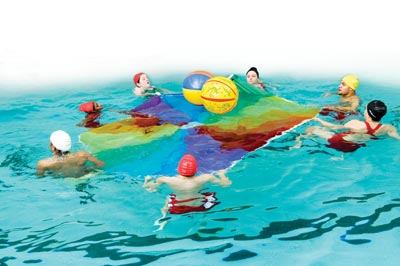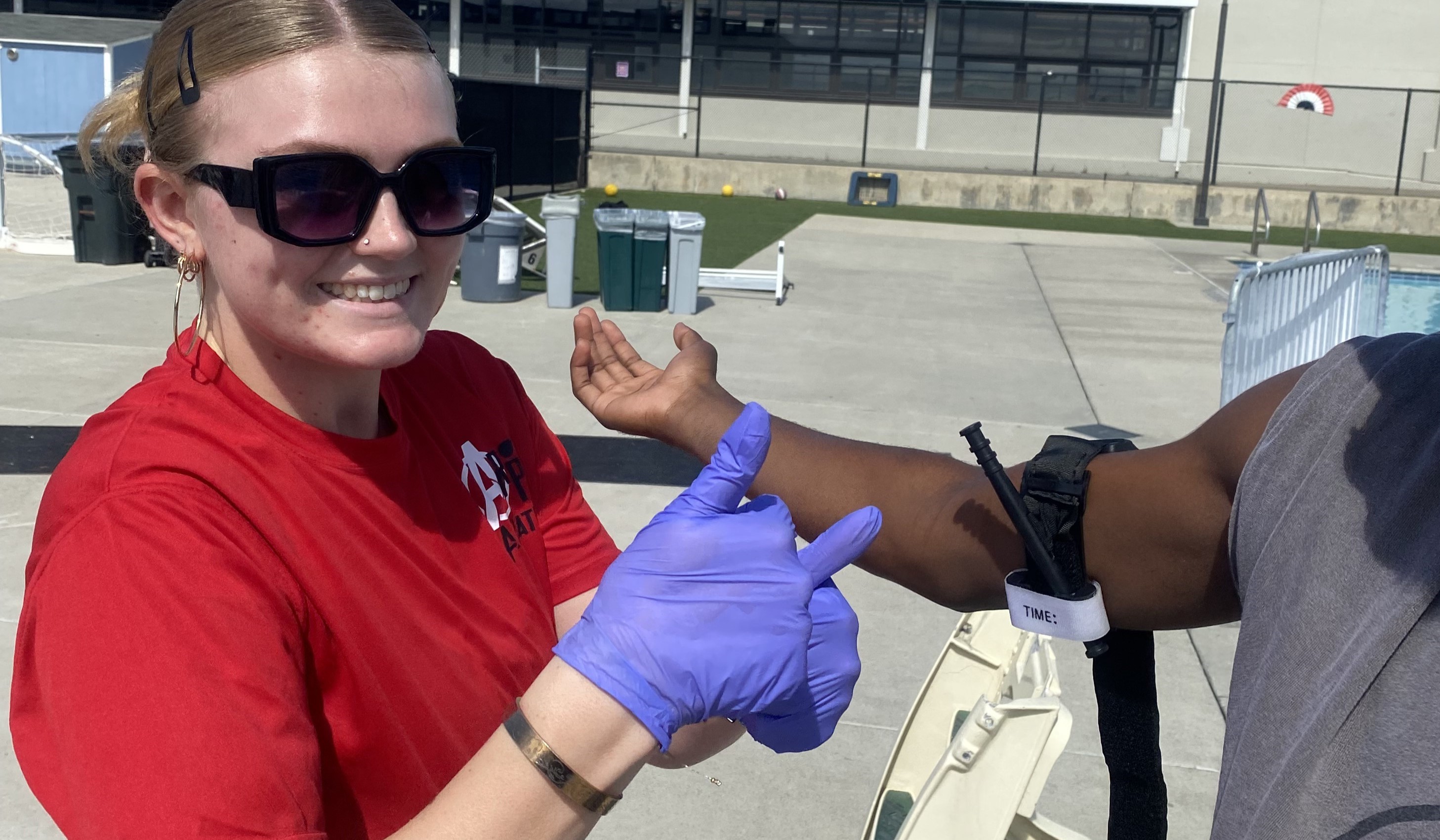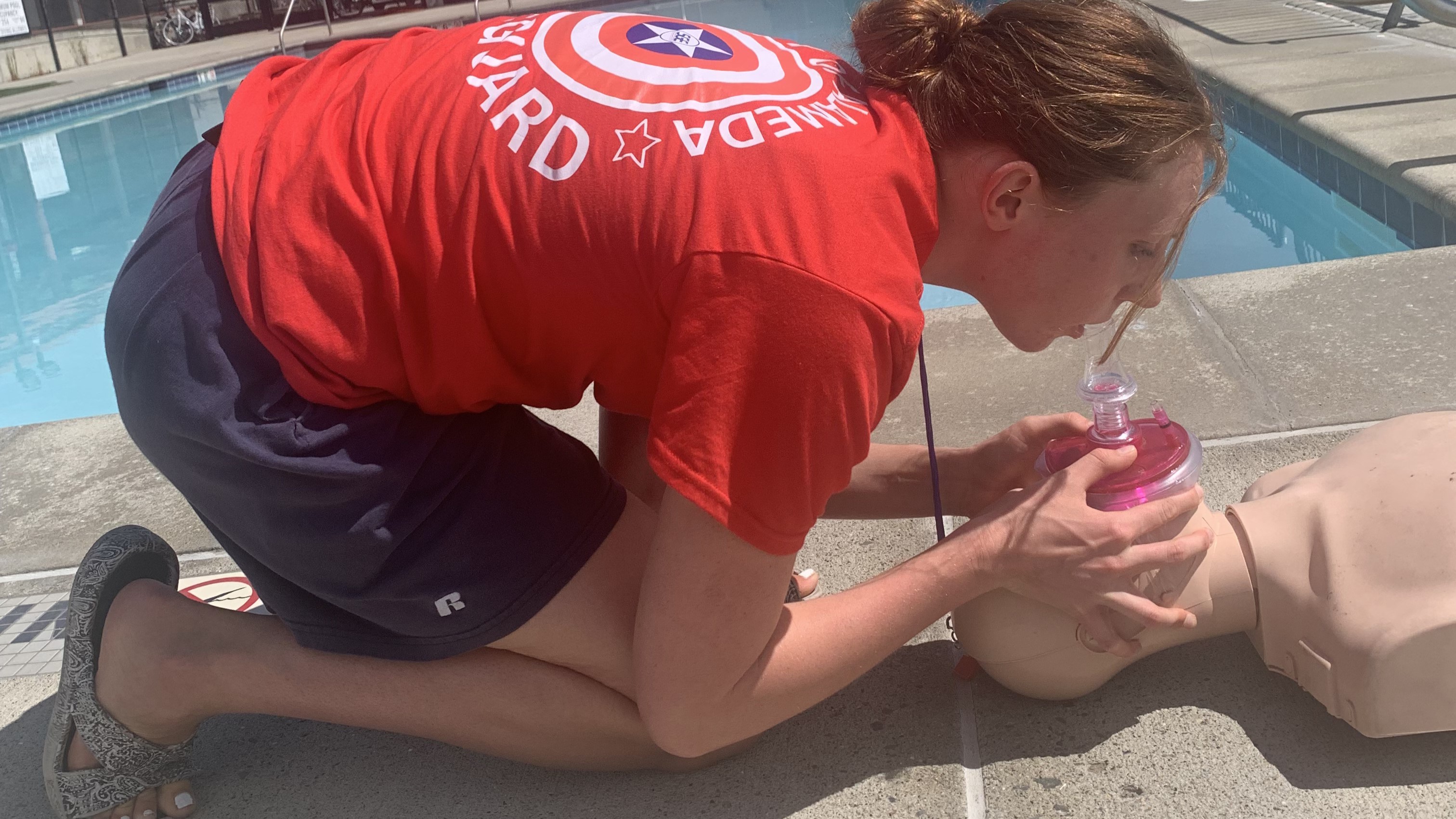You have a well-run aquatic venue. Operations are efficient, patrons are happy, and events have succeeded as planned. It is past mid-season. Your regular swimmers know the rules.
Newcomers are easy to spot and problems have decreased. Your guards, while still needing to maintain vigilance, spend a large majority of their time sitting — and sitting and sitting. Lethargy is setting in. Response readiness, as well as overall aquatic fitness now is on the decline. How can you break this negative pattern?
Conditioning, of course. But isn’t that what your guards have been doing all season? Yes, but conditioning should be ongoing. Season-long conditioning also can get boring, tedious, repetitious and generally distasteful. Challenge your guards with unique, different and more difficult conditioning activities. Let them know there is still work to be done to keep that high aquatic fitness edge.
Cage Ball Pass and Team Parachute are two activities designed to not only meet the requirements of strenuous lifeguard conditioning, but also provide high-level physical challenge, particularly for your over-confident, complacent, “I can do anything” guards. Both activities require a high level of teamwork and are guaranteed to be a workout for even strong swimmers.
Putting a cage ball and/or a parachute into the pool provides a very different experience with well-known land equipment. Because of the size of this equipment, guards must work together. The unique aspect of the cage ball and the parachute means the guards will have to problem-solve. The parachute activity, in particular, is extremely difficult when conducted in deep water.
Cage Ball Pass
A cage ball is needed for this activity. Cage balls come in a variety of sizes and are available from most physical education equipment companies. The larger the cage ball used, the more challenging the activity. If a cage ball is not available, a buoy ball, balance ball, or earth ball may be easily substituted.
This is a deep-water activity. Swimmers tread water in a circle. A cage ball is passed overhead around the group. The ball cannot touch the surface of the water. Swimmers must pass the ball using two hands. The ball should not be thrown or batted. Guards’ kicking strength and endurance will be challenged because both arms and the ball are held above water.
For variation, pass the ball to music. When the music stops, the person with the ball must hold it in the air for a specific number of seconds (or until the music starts again). Increase the distances between swimmers, forcing each swimmer to tread and travel forward to deliver the ball to the next person, holding the ball overhead, to pass it on. Pass the ball back and forth between two people. See how many passes each pair can make in a specified time.
Team Parachute
One parachute is used for this activity. Parachutes come in a variety of sizes and are available from most physical education equipment companies. The larger the parachute used, the more challenging the activity.
Because of its size and shape, the parachute is ideal equipment for developing teamwork. Select a size that makes it possible for the chute to be spread out on the water’s surface, with at least a full lane of pool space between any edge of the chute and any pool wall. Also consider the number of people in the group. The more participants, the larger the parachute should be.
Caution: When working with a parachute in the pool, watch carefully to make sure no one becomes trapped under the parachute as it rests on the water surface. There are a variety of parachute activities appropriate for lifeguard, including:
- Parachute Tug of War: Spread the parachute on the water’s surface, as centered in the activity area as possible. Have participants gather evenly spaced around the parachute, grasping it in both hands. Divide the group across the center, making two teams, each team with its backs to opposite walls of the pool. On a given signal, each team should attempt to pull the other team until the wall behind the pulling team is reached. This can be a single-pull competition, or a best of several pulls. Caution: Prearrange a stop signal to use incase a team gets too close to a non-goal wall. To vary this activity, specify the kick to be used during the pull. Allow participants to hold the parachute with only one hand and use the other to aid in the swim/pull. For variety, have guards use a rescue tube, and grasp the parachute by reaching over the tube (similar to carrying a victim) to grasp the parachute.
- Ball Bounce: Spread the parachute on the water’s surface, as centered in the activity area as possible. Have participants gather evenly spaced around the parachute, grasping it in both hands. Place several inflated balls on the center of the parachute. By alternately lifting and lowering the parachute, try to get as many balls lifted into the air at the same time as possible. To vary this activity, participants should try to loft balls into the air and off the parachute over the head of someone else. At the same time, each participant should try to prevent any balls from flying off the parachute over his or her own head. One point is scored each time a ball flies over the head of a participant. The winner has the lowest point total.
- Transport: Spread the parachute on the water’s surface, with one edge next to a side pool wall. Have participants gather evenly spaced around the parachute, grasping it in both hands. One participant is selected as the “rider.” The rider crawls onto the parachute and moves to the center. To make the parachute a stable platform, those around the chute must pull back as hard as they can, making it taut. Once the rider is centered on the chute, keeping the chute taut, the group must move the rider to the opposite side without the rider getting wet. Participants around the side may gather up as much of the chute as necessary to create a flat platform.
To vary this activity, allow transporting participants to provide additional support from under the parachute, holding the chute and the body of the participant above the water surface.
Training activities described here are from Grosse, S. (2009). Lifeguard Training Activities and Games. Champaign, Ill. Human Kinetics.



